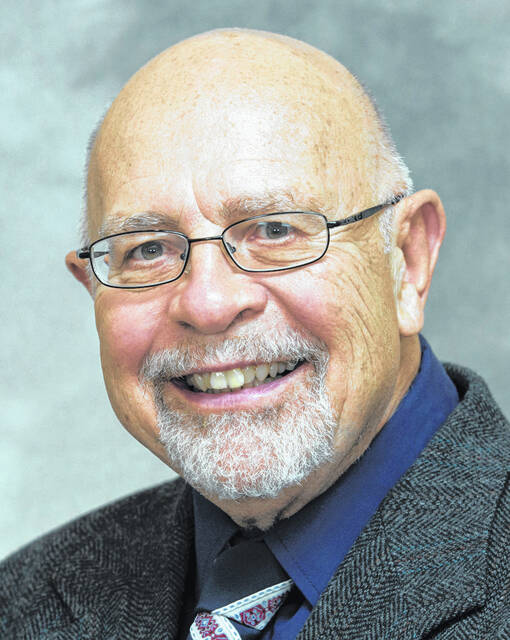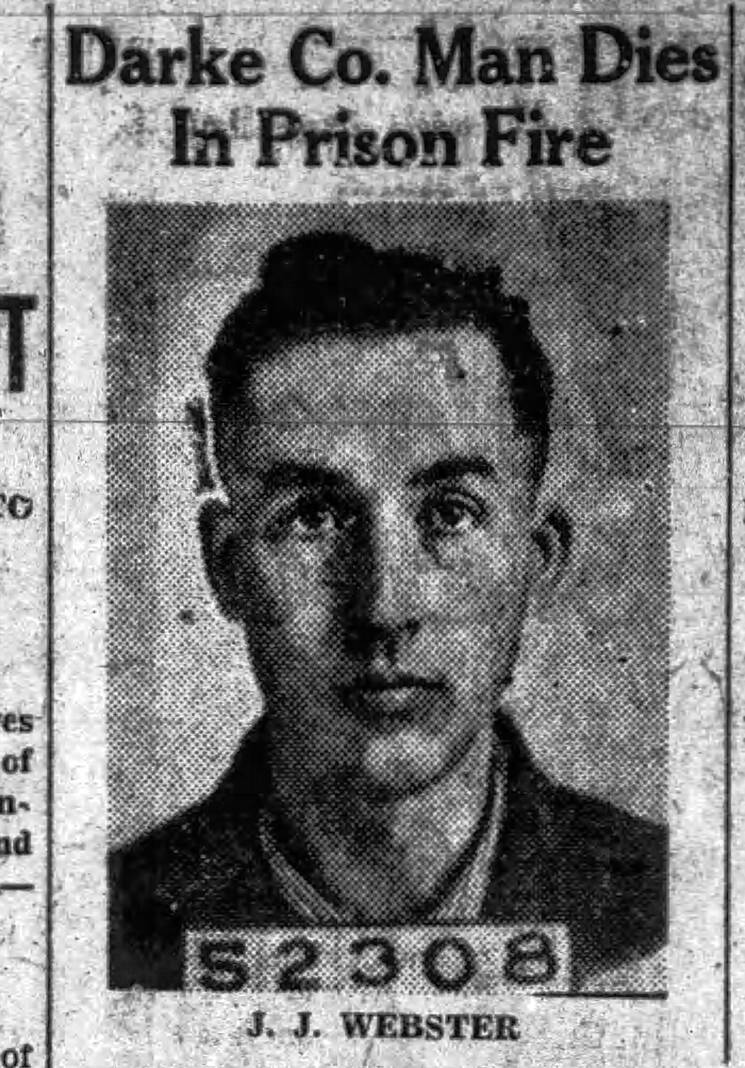

J. J. Webster
Provided photo
Near Darke
By Hank Nuwer
The Greenville Democrat said James J. (J.J.) Webster looked too dignified to be a criminal. “Rather did he appear as a bank clerk,” the paper said.
Tall and dark, Webster wore spectacles and a brown business suit at his trial. The prosecution named him leader of a gang that robbed the Hollansburg Bank on July 11, 1923.
He and accomplice Oscar Kress entered the bank under the pretext of being salesmen.
Kress held a pistol to the head of cashier C. E. Fulkerson. Webster, also armed, vaulted a counter. A female assistant clerk fetched a storage box.
The pair escaped with $16,500 in bonds and cash. They drove a Hudson touring car but ditched it.
They escaped in a waiting getaway car driven by Charles Davidson of Darke County.
Webster was apprehended selling the stolen bonds in Tennessee. He confessed to Darke County authorities and fingered the two accomplices.
On April 21, 1930, one of the worst fires in America’s history erupted at the Columbus Penitentiary.
At the time of the conflagration, Webster had served seven years out of a 20-year sentence.
The cause of the fire was a candle that ignited oily rags. It spread across several cell blocks. Prisoners by the dozen burned alive in their cells. Guards with keys could free just so many men.
A few guards and prisoners like John Bauer and “Big” Jim Morton saved the lives of many prisoners. They carried the injured through the smoking ruins.
A daughter of the warden was heralded for her tireless work nursing victims through the night.
Ohio papers at the time cited these people as heroes.
National Guard and Salvation Army personnel helped doctors and convicts treat the burn victims.
Identification of bodies was difficult. Many corpses had prison suits with numbers burned away.
“I saw some terrible things in the World War, but the prison fire was the most horrible thing I have witnessed in my life,” said J. Allen of the Salvation Army.
322 inmates, including J. J. Webster, perished. Kress and Davidson survived.
The screams of the victims forever haunted prison staff and convicts.
Legislators demanded an investigation after officials admitted the penitentiary held twice as many prisoners as it should have.
Some public officials lashed out at abstinence reformers. Many inmates served time for non-violent alcohol offences.
An inmate designed an ornamental fountain to honor the victims.
Prison officials blamed the cause on arson, but convicts disputed the claim as bogus.
One inmate joked that prison officials next would claim the prisoners the warden served inmates daily steak and Bull Durham tobacco.
Blame for the burning rags never was determined.
J. J. Webster was buried in Arcanum’s Abbotsville cemetery.
Webster had a wife and two daughters. His gravestone honored his service to his country as an air squadron sergeant in France during World War I.
The Ohio state legislature in 1931 passed measures to reform the state’s prison system. Among them was the creation of an Ohio Parole Board. Thousands of mainly non-violent prisoners gained early release.
Oscar Kress, the bank robber, was paroled.
Another parolee was Charles Hascher of Greenville, then serving a seven-year sentence. He suffered minor burns in the fire.
The widowed Hascher drew headlines in 1925 after a plea of guilty for incest with his teen-age daughter. Unfortunately, newspapers printed her name. (She married and lived a long life).
The details of the operation became public after Howard Downey and Percy Katherman of Bradford attempted to blackmail a rural Darke County physician who performed the abortion.
Howard Downey in 1922 had been a small-time member of a Union City, Ind. operation that stole cars to tear apart for parts. The gang worked with at least two crooked garage owners in Randolph County and Fort Wayne.
Among other mistakes, the apparently high IQ thieves forgot to erase car serial numbers.
Blackmailers Downey and Katherman served two years in the Mansfield Reformatory.
Dr. Cassius Miner of Webster went from blackmail victim to criminal in the eyes of the law.
A Grand Jury in 1925 recommended he be put on trial for the abortion of Hascher’s daughter.
After serving an 18-month sentence. Miner was released from the ill-fated Columbus Penitentiary in 1927.
The Greenville Daily News-Tribune wrote this at Miner’s sentencing: “His sentence to the penitentiary follows a disorderly life in which he has given himself over to carnal pursuits and degrading habits.” Miner once had beaten a rap for allegedly selling pharmaceutical cocaine.
At the time of Miner’s death at age 80 in 1938, he still practiced medicine in his Webster, Ohio, office. Never mind that the Ohio Medical Board revoked his license in 1926.
Hank Nuwer is an author, columnist and playwright. He and wife Gosia live on the Indiana side of the Union City state line. Viewpoints expressed in the article are the work of the author. The Daily Advocate does not endorse these viewpoints or the independent activities of the author.




